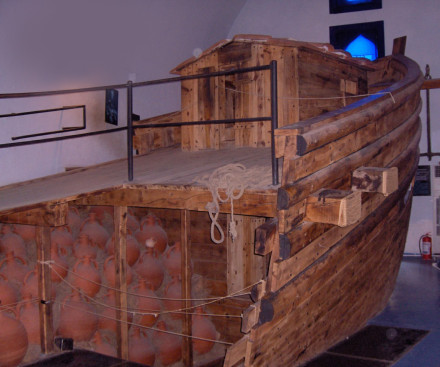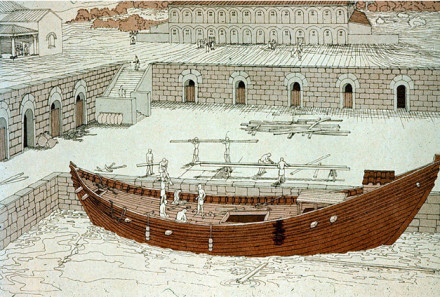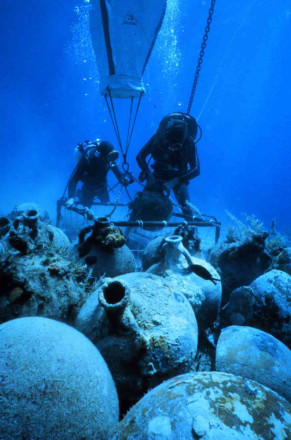History
Discovery
This Byzantine wreck was reported to journalist Peter Throckmorton in 1958 by a sponge diver from Bodrum. It was excavated between 1961 and 1964, by a team led by George Bass, who worked at the University of Pennsylvania at that time. The wreck is situated near the island of Yassıada, a small Turkish island which is know as a graveyard for ships due to the sometimes difficult sailing conditions in the area. It turned out to be a the wreck of a Byzantine ship containing a wealth of information about the 7th century AD.
Finds and cargo
A storage locker near the galley contained valuables: gold and copper coins and a number of artefacts such as tools, lamps and balance weights. It also contained a steelyard which was inscribed with the name Georgios, which probably belonged to the ship's captain/priest.
the cargo of the ship consisted of around 900 amphorae which were coated with pitch on the inside and were carrying wine. Some of these were inscribed with graffiti or marks indicating that they were used for storing olives and lentils before and thus suggesting that they were recycled.
A reconstruction of the ship was later made for the Bodrum Museum of Underwater Archaeology.

Description
Type: Byzantine merchant ship.

| Length | 62 ¼ feet (19 m) |
|---|
Status
The wreck lies at a depth of around 32-39 metres. During the excavations, a mapping system was used which provided details about the construction of the wreck and later allowed for a full reconstruction of the ship. A total of three wrecks were excavated in this area and this wreck was also called Yassi Ada 1 by the researchers.
It was found that the ship was built differently from preceding Greek and Roman ships. It had been more crudely constructed then in earlier times, suggesting that the builders chose economy over aesthetics. Other differences with earlier traditions include smaller mortise-tenon joints. This entails that the hull strength came from the frames of the ship, and not from the planking. It appears that the ship was constructed in a mixed shell-first and skeleton-first way, which places it at an important transitional stage in Mediterranean ship-building technology. Another unique feature found in this wreck was the tiled galley roof that contained a chimney. In this cooking area, water jars, cauldrons, pots and other cooking utensils were found, as well as tableware.

References
- Institute of Nautical Archaeology.
Yassıada Roman Shipwreck Excavation. - Van Doorninck, Frederick (2005).
"The Ship of Georgios, Priest and Sea Captain: Yassýada, Turkey," in "Beneath the Seven Seas," edited by George F. Bass, pp. 92-99.
New York and London.